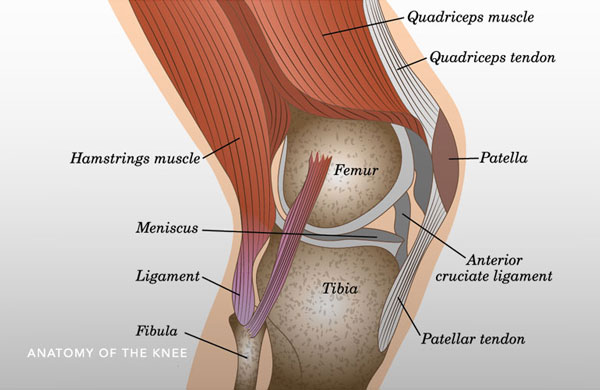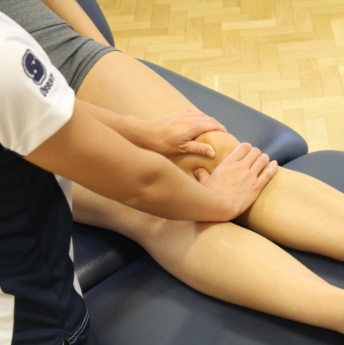What you need to know about Knee Ligament Surgery (PCL)
Contents
- 1 What you need to know about Knee Ligament Surgery (PCL)
- 2 What does the Procedure Involve?
- 3 How Long Should I Stay at my Destination?
- 4 What’s the Recovery Time?
- 5 What About Aftercare?
- 6 What’s the Success Rate?
- 7 Are there Alternatives to Knee ligament surgery (PCL)?
- 8 What Should You Expect Before and After the Procedure
Knee ligament surgery (PCL), or posterior cruciate ligament surgery (PCL Surgery), is a surgical procedure to repair or reconstruct a ligament in the knee. It may involve reattaching the ligament fibers that are torn. In some cases, additional tendon or other tissue is required in order to reconstruct ligaments that are severely damaged.
The PCL is one of the ligaments connecting your thigh bone to the lower leg bone. This ligament helps to stabilize your knee during movement. The PCL can be injured due to an accident. When the injury is severe and the PCL is torn, surgery is needed to reconstruct or repair it. PCL surgery is also recommended if the PCL is disconnected from the bone, more than one ligament in the knee is affected, how well your knee moves and your ability to move around or perform activities are affected, or if other types of treatment fail.

What does the Procedure Involve?
A posterior cruciate ligament can be performed as a minimally invasive procedure. Your surgeon will start by making small incisions around your knee. Then paths will be created in the incisions to insert surgical tools. The surgery can be done to:
-
Repair the PCL – if there is enough ligament that is still intact, your surgeon will secure the damaged ligament back onto the bone. Sutures will be used to repair any tears in the ligament. Sutures will also be used to secure the ligament to the bone/.
-
Reconstruction – during reconstruction, tendon tissue from a donor cadaver or another part of your body is used. Any damaged ligaments that remain in the knee are removed from the knee joint. Your surgeon will create small incisions on the surface of the shinbone inside the knee and the thighbone. Then, your surgeon will thread the additional tendon through the incisions and uses staples or screws to secure it. Your surgeon will test your knee’s range of motion once the graft is securely in place.
When either the repair or the reconstruction is completed, your surgeon will close the skin with stitches and place bandages on the knee.
There are two types of anesthesia that may be used during PCL: spinal anesthesia and general anesthesia. With spinal anesthesia, you will be awake throughout the procedure but won’t feel anything in your legs. You may also be given a sedative to help you relax. With general anesthesia, you will be asleep and unaware of anything throughout the procedure.
How Long Should I Stay at my Destination?
PCL surgery usually takes around 2 hours to complete. You need to stay in the hospital for at least one night, plan to stay in the local area for at least 1 or 2 weeks after surgery to allow time for your body to heal and to attend follow-up checkups.
What’s the Recovery Time?
You can gradually return to your normal activity as recommended by your surgeon. For office work, you may be able to return to work in 2 to 3 weeks. However, you need to wait at least 3 months if you do physical work. You can generally start taking part in sports within 6 months. Complete recovery can take around six to nine months.
What About Aftercare?
The aftercare for PCL will focus on rehabilitation and pain relief. You will need to take part in formal physiotherapy after surgery. The first few physiotherapy appointments are designed to help you control the swelling and pain. Within three weeks, your physiotherapist may begin to focus on a range of motion exercises. It is important that you visit your doctor and physiotherapist on a regular basis until you recover completely. You can always choose to have the physiotherapy at home instead of at your destination. Physiotherapy is important to get movement, reflexes, and strength back into your knee.
Besides physiotherapy, the following are the aftercare instructions of PCL surgery:
-
Immediately after surgery, your surgeon may also prescribe pain medication. Make sure to take your medications as and when prescribed by your surgeon.
-
You may need to use a knee immobilizer and crutches during early recovery to decrease stress on the knee but keep you mobile.
-
While resting, put pillows below your knee to keep it elevated above your feet.
-
Avoid climbing up the stairs.
-
Eat healthy nutritious food to speed up your recovery.
-
Use ice packs to reduce swelling.
-
Ask family members/friends to help you and look after you during the early stages of recovery.
-
Follow all post-operative instructions from your surgeon.
What’s the Success Rate?
Based on patient function, symptoms, and overall satisfaction, PCL surgery has a high success rate of about 90%. However, the success rate of this procedure depends on several factors, such as other potential damage that may be present in the joint.
While potential risks are rare, PCL surgery does carry some risk such as infection, excess bleeding, blood clots, persistent pain, knee instability, continued stiffness and/or numbness in the knee, and a possibility of additional surgery in the future if the treatment fails.
If your recovery is not progressing as expected or if you experience fever and chills, increasing pain, that cannot be controlled with medications your surgeon prescribed, and persistent nausea or vomiting, it is important that you call your doctor right away.
Are there Alternatives to Knee ligament surgery (PCL)?
If the injury is severe or if you have persistent knee instability despite other treatments, you would not be suitable to have other alternatives than surgery. However, in most cases, surgery is not required if the injury is not severe. In this case, you have the option to undergo physical therapy. During physical therapy, a therapist will teach you exercises that will help improve your knees function and stability, as well as to make it stronger. You can also take over-the-counter (OTC) pain relievers to help relieve pain and reduce swelling.
What Should You Expect Before and After the Procedure
Injury in the posterior cruciate ligament can cause disability and knee instability. You may also experience pain and swelling due to the injury. If left untreated, you might also be at a high risk of eventually developing arthritis. Before PCL surgery, you cannot walk normally or enjoy sports due to the symptoms that your PCL injury brings. After surgery, any pain and swelling should be gone. You can also enjoy activities again and the risk of developing arthritis is significantly reduced.
For an in-depth analysis of a PCL Procedure, watch this short video.
To check prices or to book a Knee ligament surgery (PCL) Procedure, in Thailand or anywhere else in the world, head on over to MyMediTravel now!

